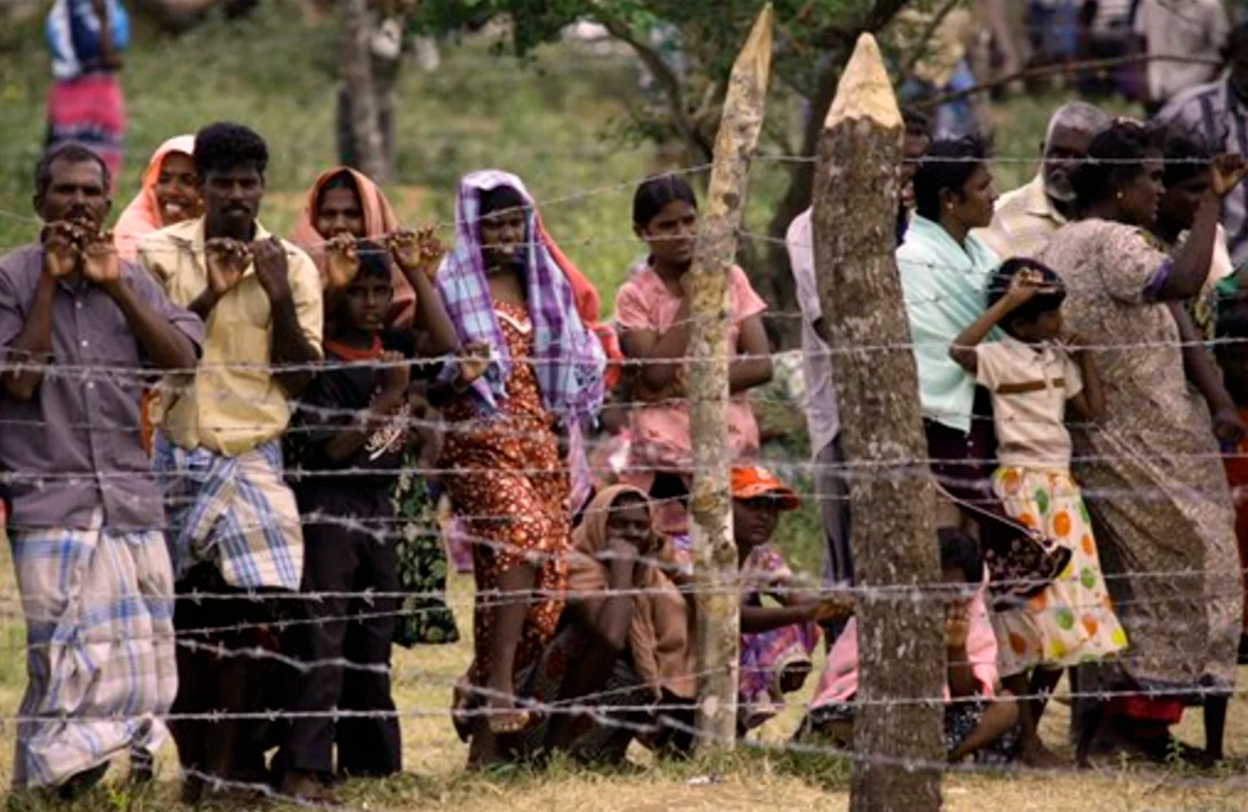Capitalism’s permanent horror

The military ordered hundreds of thousands of people into a designated “safe” zone. On reaching it, they were shelled by the army and the air force. The generals said there was another safe zone; if the people kept moving, respite would be found. It wasn’t. Again they were attacked. The scene repeated, but now, corralled onto a tiny stretch of beach and trapped against the ocean, there was no way out.
Government officials said that they were interested in killing only “terrorists”. But the “terrorists” were supported by most of the population, whom the authorities in fact considered collaborators and fair game. So the military prevented humanitarian aid entering the territory and turned the place into a mass grave through relentless and indiscriminate shelling and bombing. Then they blamed “the terrorists” for the carnage.
The rest of the world’s governments did nothing or assisted in the unfolding genocide.
It could be Gaza. But this was Sri Lanka just fifteen years ago, when the country’s government waged a merciless campaign to smash the national liberation movement led by the Tamil Tigers. Arguably, it provided the template for Israel’s current strategy.
In the first four and a half months of 2009, the Sri Lankan armed forces killed at least 70,000 of the island’s Tamil minority, according to a 2012 internal UN report. Local census records reportedly show more than 146,000 people unaccounted for, presumed dead. Perhaps 20,000 were slaughtered in the week leading to 18 May, when the Tigers were militarily defeated.
“We were herded like cattle to this place”, a survivor recounted when this writer visited the site of the massacre several years ago. “We didn’t have enough time to bury the dead. Every day we counted them: one hundred, one hundred and fifty ... in the last days, thousands.”
The parallels between Israel and Sri Lanka are striking. In some ways, the respective genocides are unique. But placed in the broader context of 21st century violence, they come across as almost par for the course.
For example, the “costs of war” project at the Watson Institute for International and Public Affairs, a research centre in the US, estimates that at least 4.5 million people have been killed in 9/11-related, US-led wars and war zones this century. That figure doesn’t include the tolls from Sri Lanka, the Congo, Darfur, Ethiopia, Myanmar, Chechnya, Ukraine and so on.
The UN refugee agency estimates that more than 100 million people today have been forcibly displaced around the world because of such conflicts.
Or take the “non-violent” terror stalking more than 800 million people: starvation. The World Food Programme estimates that 9 million die every year of hunger and hunger-related diseases. Another 1 million die because of inadequate water or sanitation, according to the World Health Organization.
There is simply too much terror to be tallied: death, displacement, violence, hunger and poverty haunt much of the planet.
Any horror can to some extent be explained in its own terms. The genocide of Palestinians, the poverty of Russia’s workers, the hunger crisis in Sudan, the foul discrimination of India’s caste system, the oppression of women in Saudi Arabia, the extraordinary levels of interpersonal violence in the United States, the increasing military build-up of the major world powers—masses of scholars, activists and researchers dedicate countless hours trying to explain the particularities of each, and more.
Sometimes, commonalities are found. For example, the “settler colonial” narrative has given many supporters of Indigenous rights a framework with which to make sense of Palestine and to make links between various other instances of national oppression. (It only gets one so far of course: most instances of national oppression in the world have nothing to do with settler colonialism, and most Israelis today cannot plausibly be designated “settlers”.)
But most of the time, the specifics of each horror are emphasised, without reference to the fundamental thing linking horrors around the world: the capitalist economy, which subordinates human need everywhere to the interests of business owners and the rulers of states.
The incessant economic and geopolitical drive to compete for profits, resources, territory and markets underpins everything. That competition is becoming more cutthroat as increasing numbers of countries—the rulers of countries, that is—accrue wealth enough to project power beyond their own borders. At the same time, global economic growth has slowed, and greater disparities of wealth have emerged between those at the top and those at the bottom of each country.
A volatile combination of international aggression and domestic divide and rule and repression is the result. Global politics has become increasingly zero sum—for anyone to get ahead, someone else must end up in a ditch.
That’s why genocide both is and is not a special case. It’s exceptional for the brutality. But it’s also part of “normal” capitalist terror, which destroys millions of lives every day.